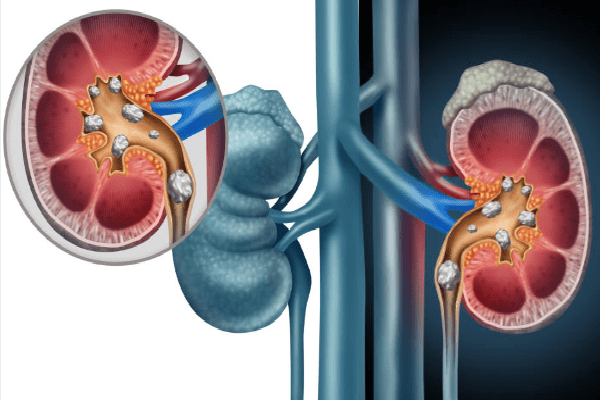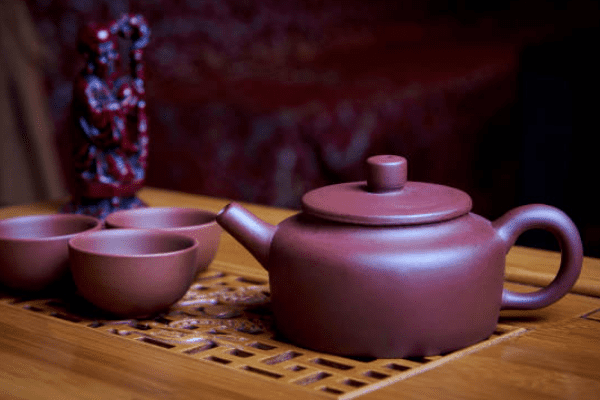Urology >>>> Symptoms and treatment of urolithiasis
Symptoms and treatment of urolithiasis.

Signs of urolithiasis.
Urolithiasis may not manifest itself in any way until the stones grow to a size that makes it difficult for them to pass through the urethra, or block the pathways of urine outflow in the renal pelvis, or begin to turn during the outflow of urine, touching the parenchyma of the kidney or the walls of the bladder, ureter causing minor bleeding. Often stones get stuck in the urinary tract, making it difficult for urine to pass out of the body. All these cases are accompanied by the development of pain syndrome - renal colic, since it is the kidney that is sensitive to the difficulty of outflow. Injuries with stones in the bladder or ureter will cause conditions such as cystitis or urethritis.
In addition to pain in the lateral part of the lumbar spine, other signs serve as an indicator of trouble in the urinary system associated with the formation of stones:
- Cloudy urine caused by inflammation of the urinary tract;
- Blood in the urine
- Swelling under the eyes, swelling of the face, or swelling of the limbs;
- Increased blood pressure.
Each of the symptoms of urolithiasis is a cause for concern and appeal to a urologist, since the chronicity of inflammatory processes and injuries caused by stones, a persistent increase in pressure will cause the development of chronic pyelonephritis, hypertension and may even lead to the removal of the kidney.
Treatment of urolithiasis.
In order to diagnose urolithiasis, laboratory tests of urine are carried out to determine the structure and composition of stones, ultrasound of the kidneys, bladder, ureter is done to clarify the location of stones, their size and number.
Depending on what kind of chemical composition the stones have, how large they are and where they are located, the treatment tactics will be chosen.
If the chemical composition of the stones is such that it allows them to dissolve, the treatment will be conservative and it will be based on drugs that help dissolve the stones .
- Cystine stones require urine alkalinization with drugs: Potassium hydrogen carbonate, Potassium citrate, Penicillamine, Thiopronin, Sodium bicarbonate (soda solution), Uralite;
- Urate stones require urine alkalinization with drugs: Sodium citrate, Potassium hydrogen carbonate, Allopurinol, Etamide, Urodan, Uralit, Blemaren, Solimok;
- Phosphate stones require the use of hydrochlorothiazide, etidronic acid;
- Xanthine stones are dissolved with Allopurinol and its synonyms;
- Oxolates and struvite stones are not soluble by drugs and require other treatments (surgical or crushing).
In the case when the size of the stones, their nature and location do not allow rapid success through conservative treatment, distance lithotripsy ( stone crushing by shock waves) is performed . But not in all cases lithotripsy is indicated , since there are oxolate stones, which have such a hard structure that in order to crush them, multiple procedures of remote lithotripsy are required , and this will lead to crushing of the kidney parenchyma. In such cases, surgery is indicated to remove the whole stones. There is also contact lithotripsy, which is used when the device is in direct contact with a stone. For example, stones stuck in the bladder are crushed with a cystoscope.
Surgical treatment of urolithiasis has two options:
- Access to stones with an endoscope (with or without an incision),
- Abdominal kidney surgery.
Lifestyle and diet for urolithiasis.
If diagnosed with urolithiasis, then you need to revise your diet. There are a number of foods that promote stone formation. Some of them will have to be excluded from the diet, the amount of consumption of others should be reduced:
- Spinach, sorrel, lettuce, grapes contribute to stone formation, and it is not recommended to eat them when oxolates and urates are formed;
- By-products, meat broths, sausages, cocoa beans, coffee, alcohol are not recommended to be consumed with a tendency to form urates;
- With phosphate stones and oxolates, limit the consumption of dairy products, fruits and some vegetables containing calcium, phosphorus, ascorbic acid;
- For all types of stone formation, foods high in animal protein are not recommended, salty foods and seasonings will retain fluid in the tissues, instead of flushing small stones and sand from the body.
In addition to diet, you should pay attention to the drinking regimen:
- Drink more water (not juices, not carbonated drinks, not alcohol, not beer) - at least two liters of water per day,
- Do not use natural mineral water or artificially mineralized water,
- Boil water with increased liming, followed by running through a filter,
- Periodically drink diuretic herbal infusions,
- Eat food - sources of natural liquid (watermelons, melons, cucumbers).
A sedentary lifestyle, sedentary work contribute to the weak movement of sand and stones from the body. Therefore, it is necessary to walk more, do jogging and other physical exercises.

Read

Read


























